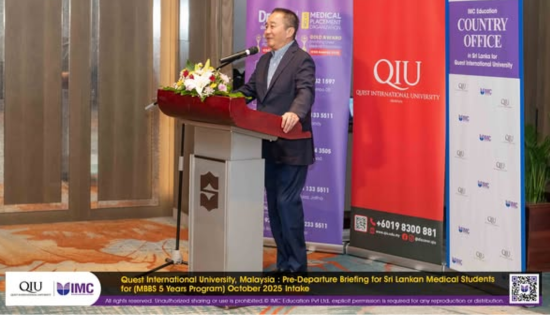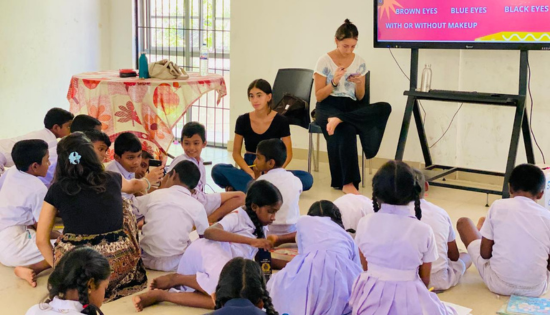Navigating the Future of Education
The Rise of Hybrid and Remote Learning

The COVID-19 pandemic has accelerated the adoption of hybrid and remote learning models, transforming the way students learn and educators teach. These models, which combine in-person and online instruction, offer flexibility and accessibility, but also present challenges that require careful consideration and planning.
One of the key advantages of hybrid and remote learning is flexibility. Students can access course materials and participate in discussions from anywhere, allowing them to balance their academic responsibilities with other commitments. For example, a student may choose to watch a lecture online during their commute or participate in a group project using collaborative online tools.
Another advantage of hybrid and remote learning is the ability to cater to diverse learning needs. Some students may thrive in a traditional classroom setting, while others may prefer the flexibility and autonomy of online learning. By offering both options, educational institutions can accommodate a wider range of learning styles and preferences.
Hybrid and remote learning also have the potential to improve access to education, particularly for students in remote or underserved areas. By leveraging technology, educational institutions can reach students who may not have access to traditional educational resources, opening up new opportunities for learning and growth.
However, hybrid and remote learning also present challenges that need to be addressed. One of the key challenges is ensuring that all students have access to the technology and resources they need to participate fully in online learning. This includes access to a reliable internet connection, devices such as laptops or tablets, and technical support.
Another challenge is maintaining engagement and motivation in a virtual learning environment. Without the social interaction and support of a physical classroom, some students may struggle to stay engaged and motivated. Educators need to use a variety of strategies, such as interactive online activities and frequent communication, to keep students engaged and connected.
In conclusion, hybrid and remote learning models offer exciting opportunities to transform education and improve access for students around the world. By carefully planning and implementing these models, educators can create engaging and inclusive learning experiences that meet the diverse needs of today’s learners.

Related News
Parents hesitant? Here’s why AIESEC will make them grateful you went
Most of us hesitate to go abroad because we think, “My parents will never allow it.” But what if going abroad for…
Read MoreEducation Development Projects in Sri Lanka Lag Behind
Most major education projects in Sri Lanka are currently at a standstill, with only a few showing tangible progress. Out of 18…
Read MoreGlobal Talent, Local Impact: How AIESEC is Transforming Sri Lankan Workplaces
By Flemin Fernando, Vice President - AIESEC in University of Kelaniya In today’s fast-paced business world, innovation often comes from fresh perspectives…
Read MoreGoing Abroad Doesn’t Have to Break the Bank : AIESEC Shows You How
Most Sri Lankan students think internships abroad are only for the rich. But what if I told you you could earn more…
Read MoreUniversity of Colombo Gains Global Recognition in Clinical Medicine
The University of Colombo has achieved international recognition, securing a position in the Shanghai Ranking’s Global Ranking of Academic Subjects 2025. This…
Read MoreCourses
-

ESOFT UNI Signs MoU with Box Gill Institute, Australia
ESOFt UNI recently hosted a formal Memorandum of Understanding (MoU) signing ceremony with Box Hill Institute, Australia, signaling a significant step in… -

Ace Your University Interview in Sri Lanka: A Guide with Examples
Getting into a Sri Lankan sate or non-state university is not just about the scores. For some universities' programmes, your personality, communication… -

MCW Global Young Leaders Fellowship 2026
MCW Global (Miracle Corners of the World) runs a Young Leaders Fellowship, a year-long leadership program for young people (18–26) around the… -

Enhance Your Arabic Skills with the Intermediate Language Course at BCIS
BCIS invites learners to join its Intermediate Arabic Language Course this November and further develop both linguistic skills and cultural understanding. Designed… -

Achieve Your American Dream : NCHS Spring Intake Webinar
NCHS is paving the way for Sri Lankan students to achieve their American Dream. As Sri Lanka’s leading pathway provider to the… -

National Diploma in Teaching course : Notice
A Gazette notice has been released recently, concerning the enrollment of aspiring teachers into National Colleges of Education for the three-year pre-service… -

IMC Education Features Largest Student Recruitment for QIU’s October 2025 Intake
Quest International University (QIU), Malaysia recently hosted a pre-departure briefing and high tea at the Shangri-La Hotel in Colombo for its incoming… -

Global University Employability Ranking according to Times Higher Education
Attending college or university offers more than just career preparation, though selecting the right school and program can significantly enhance your job… -

Shape Your Future with a BSc in Business Management (HRM) at Horizon Campus
Human Resource Management is more than a career. It’s about growing people, building organizational culture, and leading with purpose. Every impactful journey… -

Diploma in Occupational Safety & Health (DOSH) – CIPM
The Chartered Institute of Personnel Management (CIPM) is proud to announce the launch of its Diploma in Occupational Safety & Health (DOSH),… -

Small Grant Scheme for Australia Awards Alumni Sri Lanka
Australia Awards alumni are warmly invited to apply for a grant up to AUD 5,000 to support an innovative project that aim… -

MBA in Project Management & Artificial Intelligence – Oxford College of Business
In an era defined by rapid technological change, organizations increasingly demand leaders who not only understand traditional project management, but can also… -

PIM Launches Special Programme for Newly Promoted SriLankan Airlines Managers
The Postgraduate Institute of Management (PIM) has launched a dedicated Newly Promoted Manager Programme designed to strengthen the leadership and management capabilities… -

IMC – Bachelor of Psychology
IMC Education Overview IMC Campus in partnership with Lincoln University College (LUC) Malaysia offers Bachelor of Psychology Degree right here in Sri… -

ANC – BA (Hons) International Business Management (Top-Up)
ANC Education Overview Designed in partnership with public and private business organizations, this program develops one’s ability to critically evaluate business models…
Newswire
-

Sri Lanka to Convert Petrol Three-Wheelers into EVs
ON: November 24, 2025 -

No double standards in global terror fight: PM Modi at G20
ON: November 24, 2025 -

Italy slams Delhi blast, will work with India to fight terrorism
ON: November 24, 2025 -

Lawyers protest against 27th Amendment at SHC
ON: November 24, 2025 -

Defence Ministry rejects claims of halting allowance for War Hero Parents
ON: November 24, 2025










